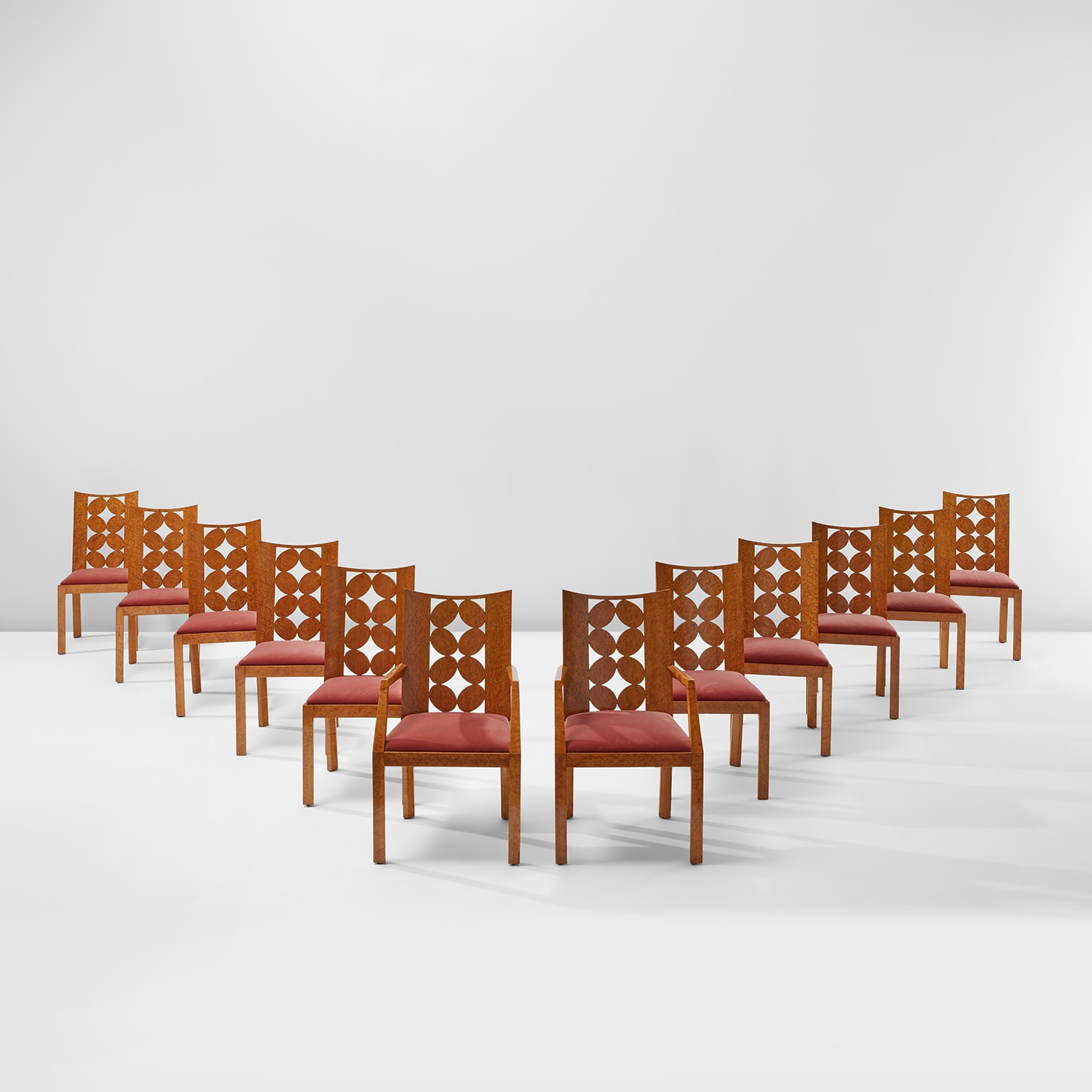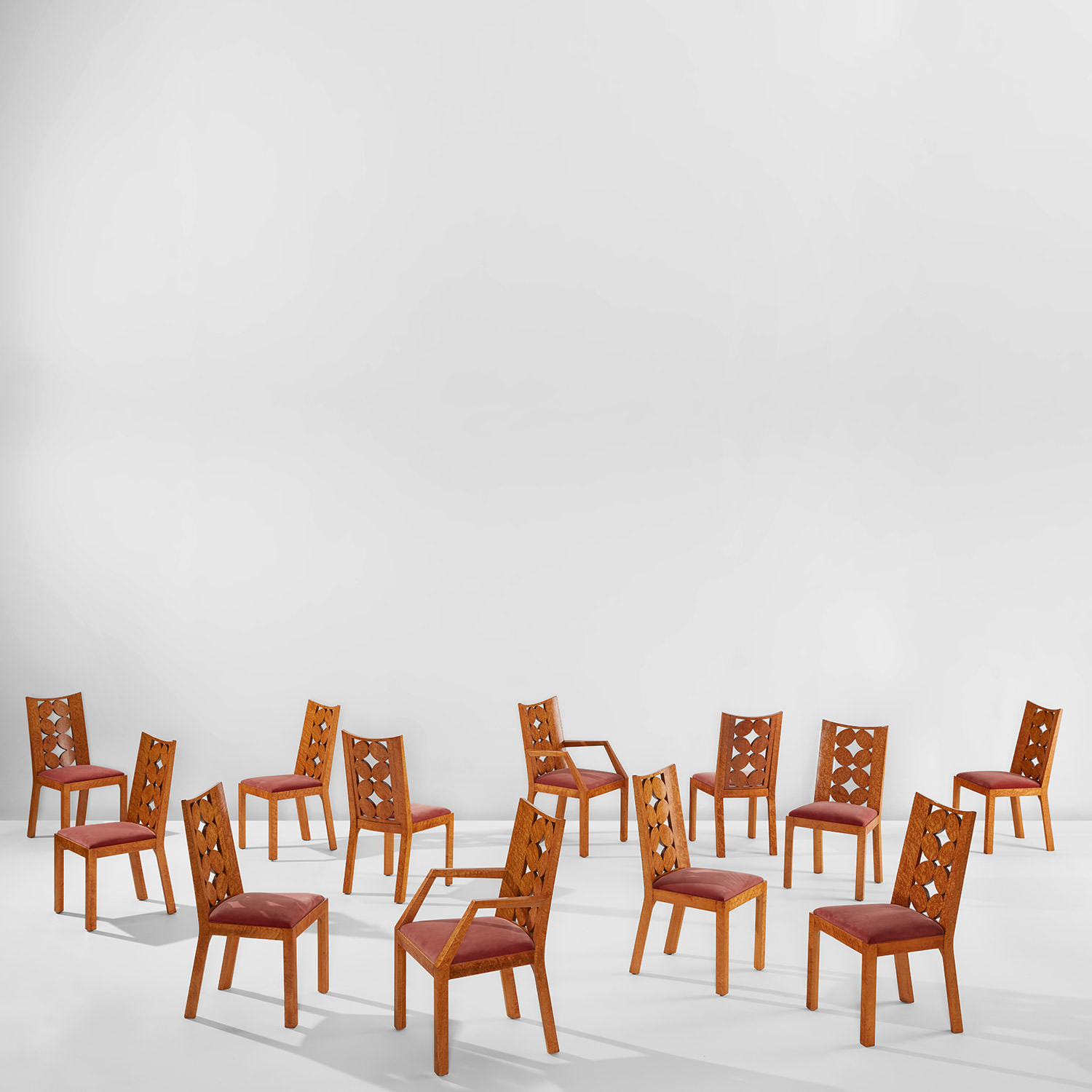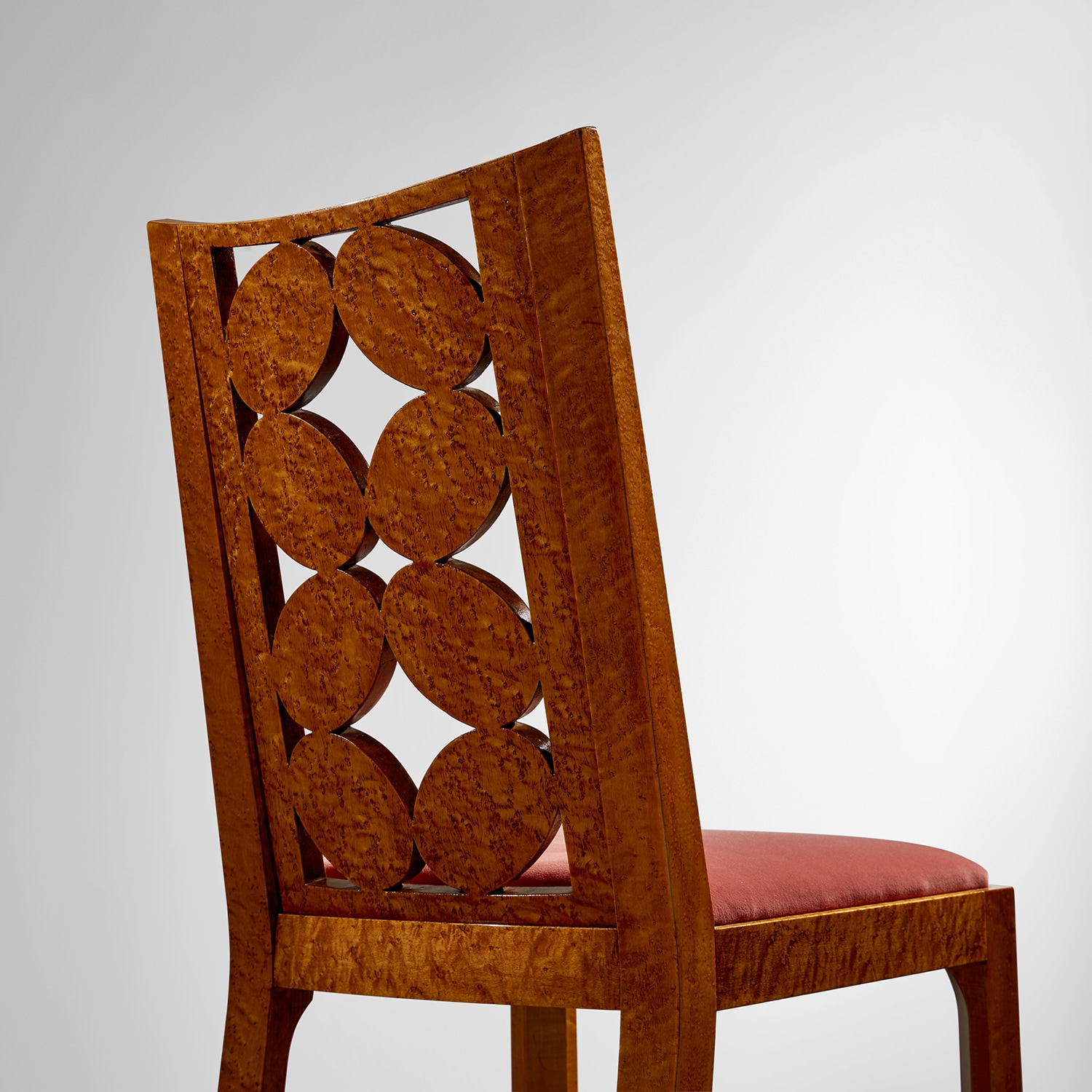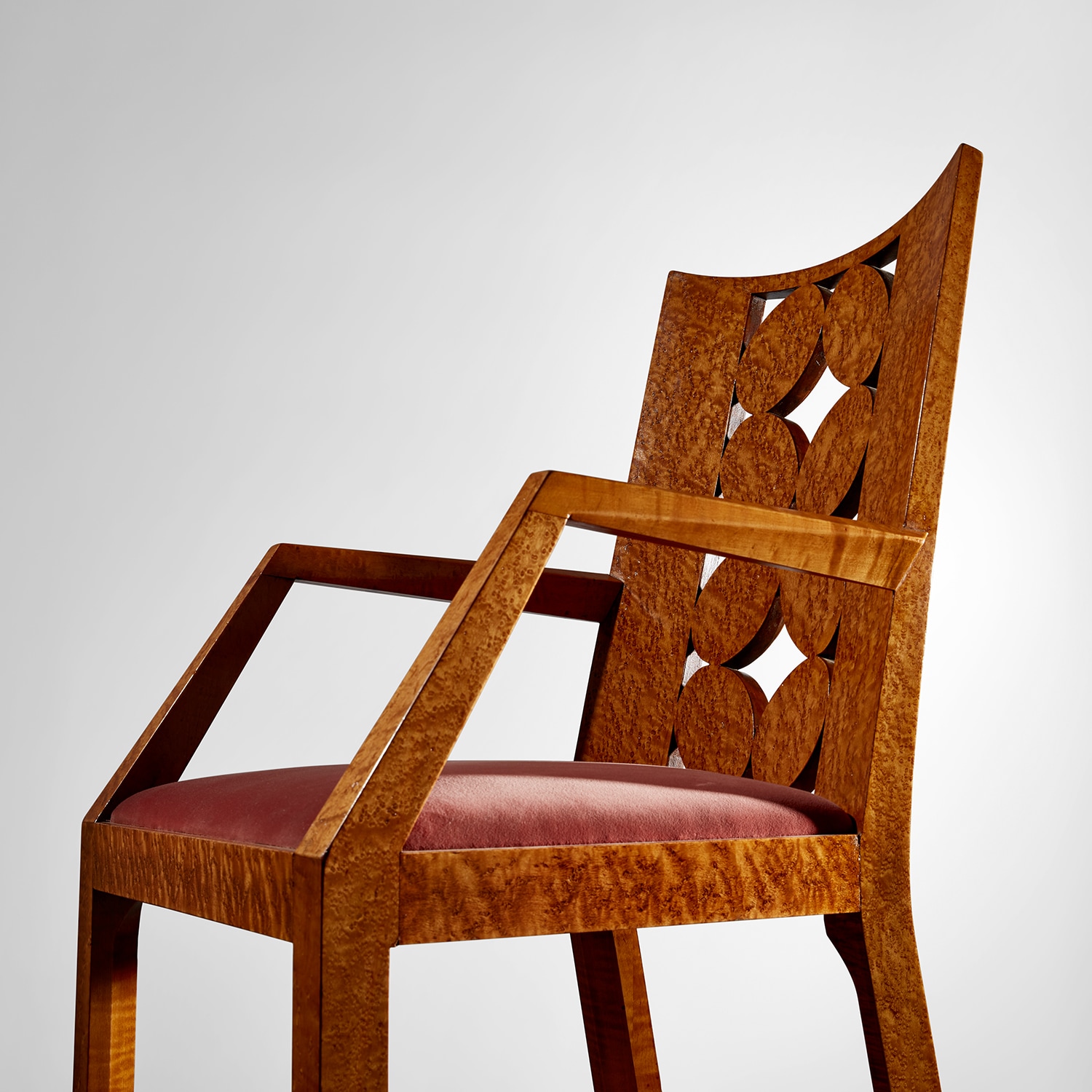







Property from a Private International Collection
62
Claggett Wilson
Set of twelve dining chairs
circa 1930
Birdseye maple and satinwood-veneered wood, fabric upholstery.
Each armchair: 39 1/8 x 23 1/4 x 23 1/2 in. (99.4 x 59.1 x 59.7 cm)
Each side chair: 38 7/8 x 19 3/8 x 20 1/8 in. (98.7 x 49.2 x 51.1 cm)
Each side chair: 38 7/8 x 19 3/8 x 20 1/8 in. (98.7 x 49.2 x 51.1 cm)
Comprising 2 armchairs and 10 side chairs.